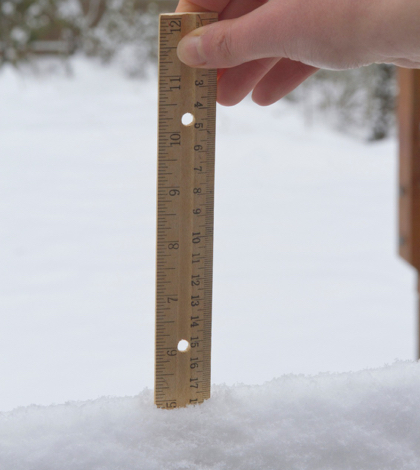Water for thirsty Californians from the near average snowpack in the northern Sierras is melting away.
As Southern California continues to bake from near record-breaking heat and the federal government’s Drought Monitor points to the region as continuing to suffer an “exceptional drought” status, the recent news that the snowmelt has arrived earlier than predicted is not good news.
The most recent statistics from the state point to the runoff from the northern Sierra to be just 71 percent of normal between April and July while the central Sierra is now predicted to deliver 77 percent of average. The southern section of the Sierra mountain range is expected to produce just 63 percent of its norm – again for April through July time period.
The annual snowmelt and runoff typically provides a third of California’s water. Although the Sierra Nevada snows and the runoff usually serve as a moderated source of water and as a natural reservoir, the extreme warmth – credited to global warming – has caused a faster snowmelt. In turn, water is being lost to more evaporation in rivers, lakes, reservoirs and soils.
These conditions are now being stacked on top of a no show El Niño in Southern California.
Daniel Swain, a PhD candidate at Stanford researching California’s weather, summed it up saying, “There were a lot of expectations that we might have a very wet winter in California. The Pacific Northwest ended up getting firehosed (sic). It got a remarkable amount of winter rain and snow this year and California got less than expected.”
“The snowmelt was already underway by mid-March,” said Michael Dettinger, a U.S. Geological Survey hydrologist. “The snowmelt since has been pretty quick.”
The state Department of Water Resources now anticipates that the mountains will produce approximately three quarters of normal runoff.
Consequently, a fifth year of drought conditions will persist and Californians, though no longer under a state mandate for conservation, are being strongly encouraged to voluntarily practice water conservation.
The state deadline for urban waters suppliers is this Wednesday by which time they must declare how much water they need to last for three additional dry years. If they anticipate not having enough water they must tell the state water board how much water they plan to save in order to meet local needs.
Allowing water agencies to set their own targets denotes the easing of the state’s mandated rationing. But critics of easing water rationing say lifting the state-wide mandate is premature.
“Returning the conservation targets to local control is going to have negative consequences,” said Sara Aminzadeh, executive director of the conservation advocacy group California Coastkeeper Alliance. “Already you’re seeing it.”
Aminzadeh spoke in reference to several water agencies, including San Francisco Public Utilities Commission (SFPUC), who have already aid they don’t need to conserve any water to ensure they have a three-year reserve supply. SFPUC has said its Sierra-fed Hetch Hetchy water system is ample though they will still urge their residents to practice conservation.
In contrast, George Kostyrko with the State Water Resources Control Board points to Californians continuing conservation efforts saying, “ongoing conservation” of water is expected to become the standard, a “way of life” in California.
 California Water News Daily Your Source For Water News in California
California Water News Daily Your Source For Water News in California


